| Weight | 111 g |
|---|---|
| Dimensions | 50 mm |
| Focal Length (mm) | |
| Max Aperture (f) | |
| Min Aperture (f) | |
| Aperture Blades | |
| Elements | |
| Sharp (Near) | |
| Sharp (Far) | |
| Rear Mount | |
| Production | |
| Serial Numbers |
Rodenstock Apo-Rodagon 50/2.8 [V1]
Reference enlarger lens. Original ‘red-ring’ version with push-pull aperture declick clutch. Cat 75.050.01.








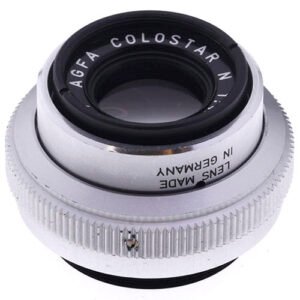
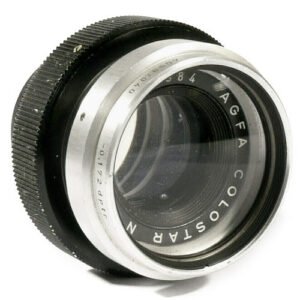
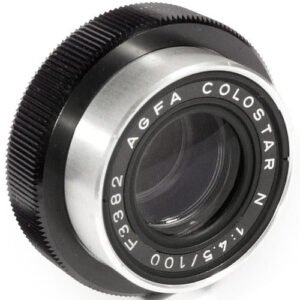
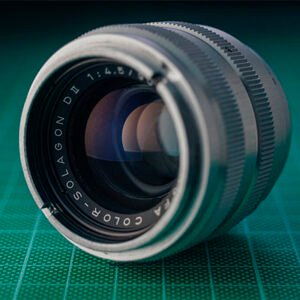
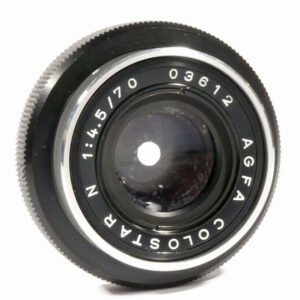
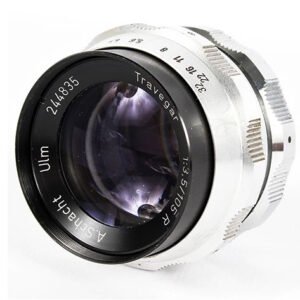
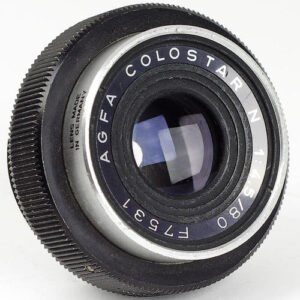
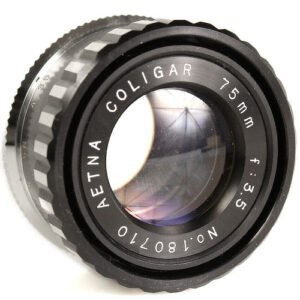
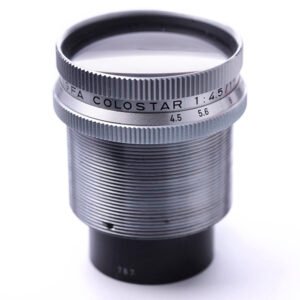

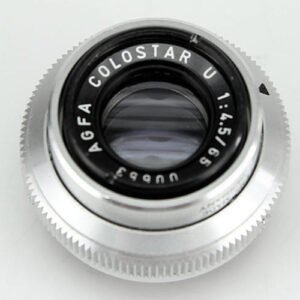
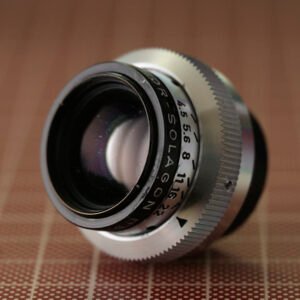
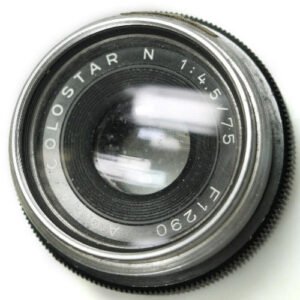
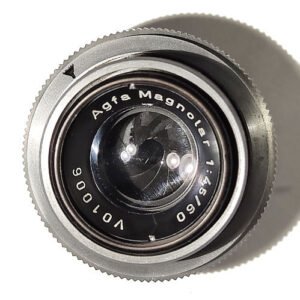

Fred –
I bought this as an experiment to use as a taking lens. It’s very well corrected, and the original 1982 version is single coated, highly corrected, high resolution but lower contrast than other more modern high end lenses. However, it easily outresolves my A7RIII 42MP sensor. Wide open it has the same contrast than stopped down. It’s also very easy to service, and a pleasure to use. Corners at infinity are well defined, and much better than lenses of the era wide open. It’s a beautiful highly corrected double gauss optimized for shorter distances but also nice at infinity. Being M39, an easy way to adapt it is to use a 30mm helicoid to M42, and use a $1 ring that adapts the 39mm thread to 42mm.
16:9 –
Values of these lenses are slightly lower than the N version which came six years later, and is slightly better. How slight? The Delta f5.6-f8 average sharpness grade for the [V1] near-field is 90%, versus the N at 90.9%. However, far-distance figures reveal the superior correction of the redesigned model: here the N is rated 2.5% sharper than the [V1]. The difference is most obvious at wider apertures, near-field: at f2.8 the [V1] scores 8.65 / 7.8 against the N’s 8.85 / 8.1. At long distance the difference shrinks but the N remains fractionally sharper throughout.
Though to call them truly ‘apochromatic’ is a bit optimistic, chromatic aberrations are minimal and all Apo-Rodagon 50s have near-perfect geometry. As taking lenses, the better coatings of both the 1984 Apo-Rodagon 50/28 [V2] and the 1986 N give them snappier contrast and better flare resistance. All share identical curved-5 diaphragms and have similar bokeh: reasonably calm for an enlarger lens.
If you only shoot this lens in controlled lighting and at short range, stopped down a bit, it’s easily worthy of Gold status. However, the long-distance performance and slightly laggy Zone C prevent it from joining the elite level of Gold membership. Nonetheless, it’s as high a Silver as you can get. Given the small margin of improvement offered by the [V2] and N, a good sample is a good buy, and the push-pull declick clutch has sweeter haptics than later versions.